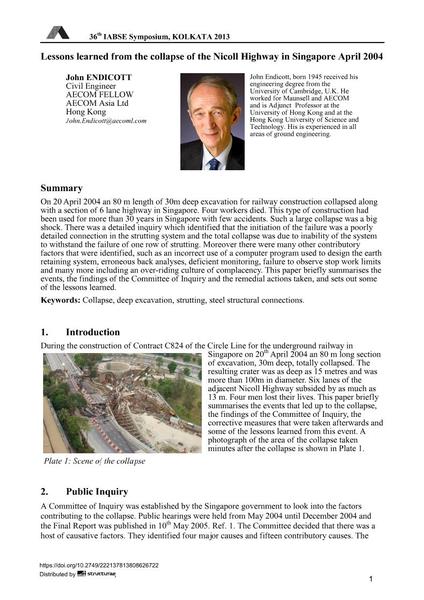Lessons learned from the collapse of the Nicoll Highway in Singapore April 2004

|
|
|||||||||||
Bibliografische Angaben
| Autor(en): |
John Endicott
|
||||
|---|---|---|---|---|---|
| Medium: | Tagungsbeitrag | ||||
| Sprache(n): | Englisch | ||||
| Tagung: | IABSE Symposium: Long Span Bridges and Roofs - Development, Design and Implementation, Kolkata, India, 24-27 September 2013 | ||||
| Veröffentlicht in: | IABSE Symposium Kolkata 2013 | ||||
|
|||||
| Seite(n): | 1-6 | ||||
| Anzahl der Seiten (im PDF): | 6 | ||||
| Jahr: | 2013 | ||||
| DOI: | 10.2749/222137813808626722 | ||||
| Abstrakt: |
On 20 April 2004 an 80 m length of 30m deep excavation for railway construction collapsed along with a section of 6 lane highway in Singapore. Four workers died. This type of construction had been used for more than 30 years in Singapore with few accidents. Such a large collapse was a big shock. There was a detailed inquiry which identified that the initiation of the failure was a poorly detailed connection in the strutting system and the total collapse was due to inability of the system to withstand the failure of one row of strutting. Moreover there were many other contributory factors that were identified, such as an incorrect use of a computer program used to design the earth retaining system, erroneous back analyses, deficient monitoring, failure to observe stop work limits and many more including an over-riding culture of complacency. This paper briefly summarises the events, the findings of the Committee of Inquiry and the remedial actions taken, and sets out some of the lessons learned. |
||||
| Stichwörter: |
Einsturz
|
||||
